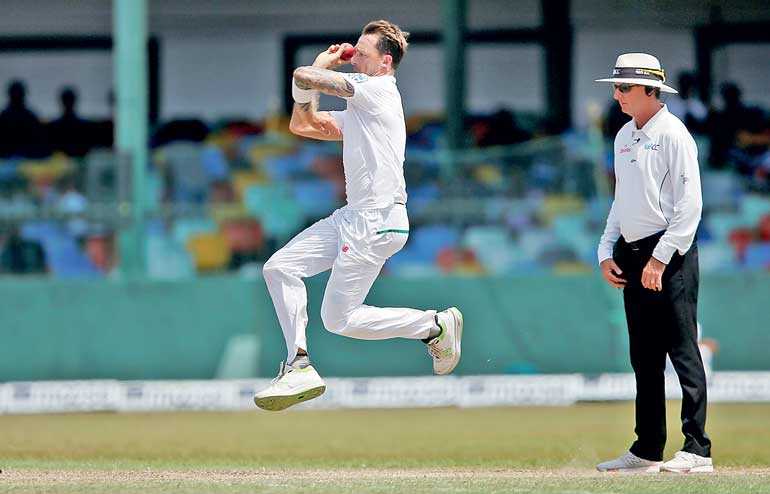Monday Jan 13, 2025
Monday Jan 13, 2025
Tuesday, 31 July 2018 00:10 - - {{hitsCtrl.values.hits}}

MUMBAI (Reuters): South African paceman Dale Steyn believes this year’s Australian ball-tampering scandal could be viewed as a “cry for help” because the balance between bat and ball in cricket has become so skewed in favour of the batsmen.
Steyn, one of the most prolific wicket-takers of his generation, did not condone the actions of the Cape Town trio, but said the incident exposed the need for cricket to change to prevent the loss of the art of reverse swing bowling.
“It’s obviously not on, but if you think about it, it’s almost like a cry for help. We need to do something,” Steyn told Reuters in an interview.
“There’s so much in favour of batsmen these days. Fields are small, two new balls, powerplays, bats have gotten bigger than they used to be, the list can go on.
“You bowl a ‘no ball’ and it’s a free hit, but I have never seen a rule change that favours the bowler.”
Steyn, who is tied on 421 wickets with Shaun Pollock as South Africa’s highest wicket-taker in Tests, felt the desperation to get the ball to swing was forcing cricketers to flirt with regulations.
Typically, swing bowlers use the new ball to deviate it in the air to outwit batsmen, but Pakistan fast bowlers stunned the world in the 1980s by introducing reverse swing to Test cricket.
The skill of making an old and battered ball move in the air in the opposite direction to conventional swing was developed into an art form in the following decade by their successors Wasim Akram and Waqar Younis.
In March, with South Africa already leading by more than 100 in the second innings for the loss of a single wicket on the third day of the third Test, a trio of Australians hatched a plan to tamper with the ball to get that reverse swing.
They paid a heavy price with batsman Cameron Bancroft, who was spotted with sandpaper in his hand, suspended for nine months, while Steve Smith and David Warner were stripped of the captaincy and vice captaincy and handed one-year bans.
“It’s a big plea and it would be a sad day to see (reverse swing) disappear,” Steyn said at a promotional event for GoPro.
“I grew up watching Akram, I grew up watching Waqar and all these geniuses run in and reverse swing the ball.
“And you just don’t see it today. What inspiration will other fast bowlers have if they don’t have anybody to inspire them to become fast bowlers? You might as well put a bowling machine there and have everyone try and become a batter.”
The International Cricket Council in 2011 introduced an extra new ball in one-day games, a move which many believe has made the already batsman-friendly 50-over format even more difficult for the bowlers.
India batting great Sachin Tendulkar, among others, recently called for a return to the use of one new ball from each end in order to revive the moribund art of reverse swing in the format.
Steyn agreed, adding that other rule changes, like the limit of two bouncers per over, were more of a hindrance than a help for bowlers.
“They changed the rule and said we will bring two new balls into the game,” the 35-year-old added.
“I don’t want a new ball when I am bowling in the subcontinent. I want an old ball that can’t get hit out of the ground. I want a ball that, when I bowl, doesn’t have true bounce, so that the batsman can’t hit it. These are not rules that favour the bowler at all. They are, if anything, advantageous to the batsman.”